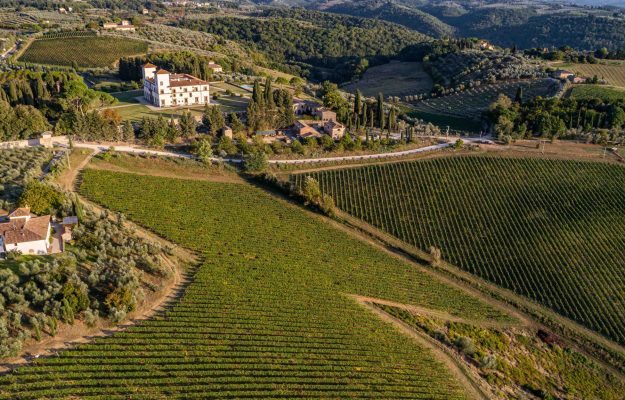Unesco recognition is getting closer for Chianti Classico, the iconic Tuscany region that gave birth to one of the world’s most famous Italian wines. Thanks to the beauty of a unicum that tells centuries of history and “enlightened anthropization”, and harmoniously stratified, until today, of that still intact landscape, and, at the same time, productive and industrious, which unfolds between Renaissance Florence and Siena of the Middle Ages: the “system of Chianti Classico villa-farms” has been officially included in the table of the Italian “proactive list” of candidate sites for World Heritage.
This is the first and most important step towards achieving prestigious recognition from a territory that is the “archetype” of Tuscany, as described in this video. Not only unique and unmistakable landscapes, history, and culture, Renaissance art: Chianti Classico is a district which, with wine as the pivot around which olive oil, quality agriculture, catering, hospitality, and more rotate, has an estimated value of around 1 billion euros. There are over 7,000 hectares of vineyards, with an average annual production of 35 to 38 million bottles that are exported to 160 countries worldwide. The Gallo Nero recorded a turnover of +17% on 2021 and +46% on 2020 in 2022 (data: Maxidata Observatory for the Chianti Classico Consortium), with a growth in bottles sold of +6% on 2021.
The proposal for candidacy for UNESCO site, put forward by the Tuscany Region, was conceived and managed by the Fondazione per la Tutela del Territorio del Chianti Classico Ets, led by President Tessa Capponi Borawska, with the unanimous agreement of all the municipal administrations of the area. The study resumed in 2019 under the guidance of the scientific director Professor Paola Eugenia Falini, is based not only on in-depth knowledge of the extensive literature in the sector but also on numerous and specific observations in the field, which have highlighted ever more clearly the characteristics of uniqueness that identify the Chianti Classico area in an assuredly distinctive way.
“The Fondazione - says the president Tessa Capponi Borawska - scrupulously and with scientific rigor organized all the preliminary analysis for the presentation of the formal request for inclusion in the Italian proposal list. I would like to take this opportunity to thank the Tuscany Region, the mayors of the area, and all the other subjects involved for their attention and vision, which have enabled an ambitious path towards a goal that I can only define as a common good for our region and our country, not just for the Chianti Classico area. We will now continue the work for the presentation of the dossier in order to obtain the coveted designation as a World Heritage Site with great enthusiasm”.
“A long-awaited passage that I am pleased with, the result of a careful and scrupulous commitment - said Eugenio Giani, president of the Tuscany Region - this stage now gives us renewed enthusiasm to continue working together as we have done so far. Chianti Classico, one of the world’s iconic images of Tuscany, represents a cultural value of our region and country in and of itself, and its inscription in the Unesco heritage list will allow it to fully realize that role. To do so, we can rely on this region’s ability to network and on its historic vocation to produce growth and development through collaboration, resource pooling, and an open and shared vision of the future, assumptions that provide us with the strength and energy to continue the journey”.
A step forward, therefore, for that landscape of incomparable beauty, which Piero Antinori, the most admired producer of wine in Italy, has defined as “a paradise on Earth for producing wine”.
Copyright © 2000/2025
Contatti: info@winenews.it
Seguici anche su Twitter: @WineNewsIt
Seguici anche su Facebook: @winenewsit
Questo articolo è tratto dall'archivio di WineNews - Tutti i diritti riservati - Copyright © 2000/2025








































































































































































































